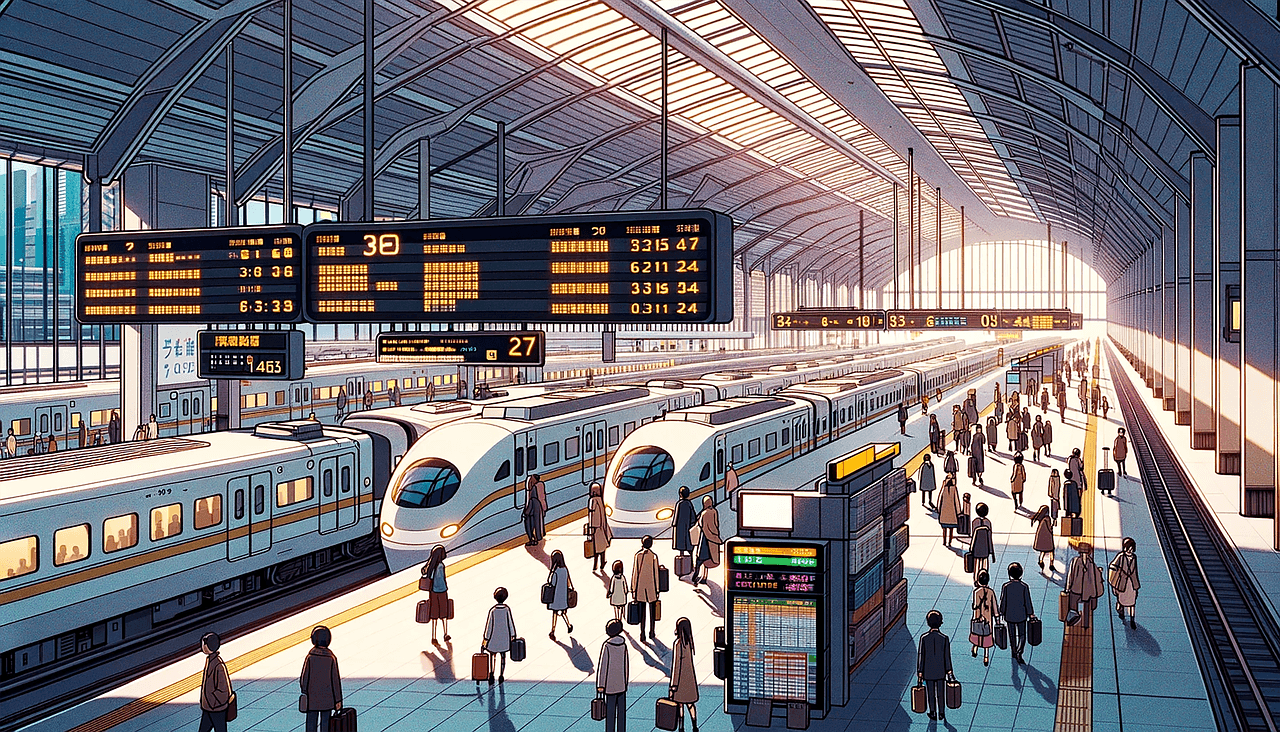Japan boasts one of the most efficient, reliable, and extensive rail networks in the world. Whether you’re a first-time visitor or a seasoned traveler, navigating Japan by train is an essential part of the experience. This guide will help you understand how to travel in Japan by train, from ticket options to train etiquette.
1️⃣ Understanding Japan’s Train System
Japan’s train network consists of multiple types of trains:
- 🚄 Shinkansen (Bullet Trains) – High-speed trains connecting major cities.
- 🚆 Limited Express Trains – Faster regional trains requiring special tickets.
- 🚋 Express and Rapid Trains – Quicker than local trains, stopping at fewer stations.
- 🚉 Local Trains – Stop at every station, ideal for short distances.
- 🚇 Subways – Operate in major cities like Tokyo, Osaka, and Kyoto.
2️⃣ Getting a Japan Rail Pass 🎟️
For travelers planning to explore multiple cities, the Japan Rail Pass (JR Pass) is a cost-effective option. It allows unlimited travel on most JR trains, including the Shinkansen (except Nozomi and Mizuho). Options include 7-day, 14-day, and 21-day passes. It must be purchased before arriving in Japan.
3️⃣ Buying Train Tickets 🎫
If you don’t have a JR Pass, you can purchase tickets in various ways:
- 🏧 At Ticket Machines – Available in English and easy to use.
- 🏢 At Ticket Counters – For assistance from station staff.
- 💻 Online – Through official JR websites or third-party services.
- 💳 IC Cards (Suica/Pasmo/ICOCA) – Reloadable cards for local trains, subways, and buses.
4️⃣ Navigating Train Stations 🚉
Japan’s train stations are busy but well-organized. Key things to know:
- 🔤 Signage is in Japanese and English – Look for directional signs to platforms.
- 🌈 Follow the Color Codes – Subway and train lines are color-coded for easy identification.
- 📱 Use Train Apps – Apps like Hyperdia or Japan Travel by Navitime help plan routes.
- 🚶 Queueing & Boarding – Stand in designated lines and allow passengers to exit first.
5️⃣ Train Etiquette in Japan 🎭
Japanese train etiquette is crucial for a smooth experience:
- 🤫 No Loud Conversations – Keep noise levels low.
- 📵 No Phone Calls – Messaging is fine, but talking on the phone is discouraged.
- 🛑 Give Up Priority Seats – Reserved for elderly, pregnant, and disabled passengers.
- 🚫 No Eating or Drinking – Except on long-distance trains like the Shinkansen.
6️⃣ Using the Shinkansen 🚄
The Shinkansen is the best way to travel long distances quickly:
- 🎟️ Seat Reservations – Reserved and non-reserved seats are available.
- 🎒 Luggage Rules – Large luggage (over 160cm total dimensions) requires prior reservation.
- 🛏️ Onboard Facilities – Clean restrooms, vending machines, and comfortable seating.
7️⃣ Special Train Experiences 🚞
For a unique experience, consider these trains:
- 🌸 Romancecar (Tokyo to Hakone) – Scenic train to the famous hot springs town.
- 🍁 Sagano Scenic Railway (Kyoto) – Beautiful countryside views.
- 🎀 Hello Kitty Shinkansen – Themed train for fans.
8️⃣ Final Tips for Smooth Travel ✨
- 🗺️ Plan Ahead – Use apps and websites to check train times and routes.
- ⏳ Arrive Early – Give yourself time to find the right platform.
- 🎟️ Keep Your Ticket Handy – You’ll need it to exit the station.
- 🚦 Be Mindful of Rush Hours – Avoid peak hours (7-9 AM, 5-7 PM) in big cities.
🎉 Conclusion
Traveling by train in Japan is a seamless and enjoyable experience if you’re well-prepared. Whether you’re riding the iconic Shinkansen or navigating Tokyo’s subway, understanding the system will make your trip stress-free. Happy travels! 🇯🇵🚄

